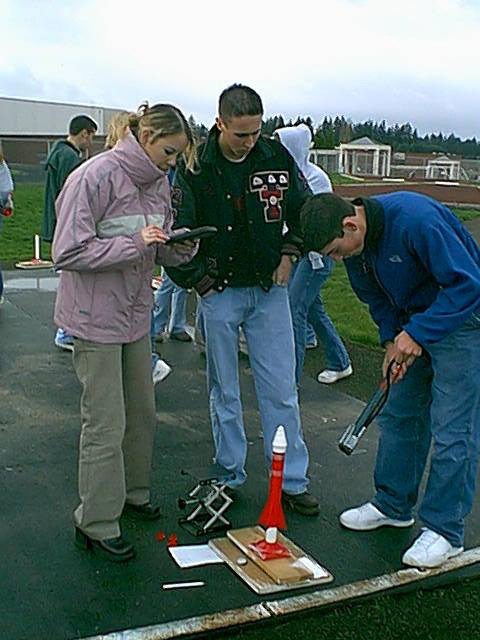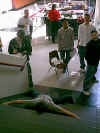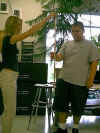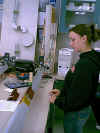 The Physics G Home Page .:. Go up
The Physics G Home Page .:. Go up  The Physics G Home Page .:. Go up
The Physics G Home Page .:. Go up Topics |
Photos |
Document and Lectures
(From Documents and Lectures use the "Back" Button to
return here)
This is a one year general Physics course for people who might have
more difficulty with math, but want to learn physics. Our philosophy is
that it is better to cover fewer topics in depth than many superficially.
This course covers in some depth the area of mechanics starting with linear
kinematics (Racing), two dimensional linear kinematics and vectors (projectile
motion), forces, (Drag racing) energy, (Rollercoasters) momentum, (Rocket
Science) and gravity and circular motion (Take us out of orbit, Sulu).
There is a required field trip near the end of the year to Oaks Amusement
Park.
In this chapter we look at how to resolve, and add vectors. Then we use
these skills to solve two dimensional motion problems as two independent
linear problems. We will do a computer lab and a rocket competition.
Unit 3 - Dynamics
This is the first real chapter of physics. We will predict the motion
of objects with a variety of forces acting on them. We will study
the concepts of inertia, friction (static and kinetic) and on multiple
forces acting in concert.
Chapter 4 - Energy
We will use energy and conservation of energy to make otherwise difficult
problems solvable. Students will measure their own power output.
Chapter 5 - Momentum
We will study and solve collision problems using conservation of momentum.
We will become rocket scientists, blow things up, and make loud exploding
noises in the hall and in the classroom.
Chapter 6 - Gravity and Circular Motion
This chapter covers centripetal motion, force and gravity. We will
set centripetal forces equal to gravity to solve satellite problems.
Students will pilot a spaceship into orbit in a computer simulation to
get an enhanced understanding of orbital mechanics. (I couldn't get
the real spaceship into the budget this year)
Photos .:. Top
(Click on thumbnails to see photo, use "Back" to
return here)
 Friction Lab |
 Air Rocket Lab |
 Presidential Visit |
 Human Power Output
|
 Going to Oaks Park |
 Duggan telling the the Mojo Man Story |
 Oaks Park |
 Momentum Lab |